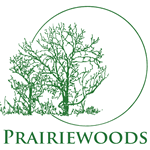The concept of “re-wilding” creation takes its cues from a philosophy of “Nature knows best,” by restricting human interference in creation’s own healing as an approach to ecological restoration and wholeness. Eminent biologist E.O. Wilson (1929–2021) had proposed—provocatively—setting aside and protecting half the biosphere for nature to heal and regenerate, and thus restoring balance to a human-befouled and decimated planet. Let it be. Wilson’s “Half Earth” proposal followed upon his ground-breaking work on biodiversity and sociobiology, which reflected his understanding of the profound inter-connection of life in all its forms (www.half-earthproject.org/). That insight, coupled with the astounding extinction rate of other-than-human species in the past two hundred years, alerted him to the fact that human meddling, either through neglect and abuse, or well-intentioned attempts to undo the damage, was threatening the whole planet. Wilson paved the way for conservation biologists like Dave Forman to explore what came to be known as “re-wilding” Earth (www.pauljepson.com/emerging-geographies-of-rewilding).
We humans are also beginning to understand the importance of re-wilding our spirituality for the good of the wider “We.” Anthropocentric mythologies often served to disconnect us from creation, and sometimes we learned to do harm to the very fabric of our fragile, inter-connected existence. In the midst of the Sixth Great Extinction, we are choking off our common life-source, our very breath. Centuries of normalized eco-degradation has done damage to our physical home, not to mention our natural wonder, and our sense of belonging to a wider “We.” Our decayed sensory perception has rendered us spiritually deaf and blind to the whole.
Planetary degradation that affects us all means we can no longer perceive ourselves as “lords and masters” of creation, hovering above all other living beings, or worse, forgetting our embeddedness in creation, our womb and our tomb. Our eco-spiritual awareness and practice requires us to begin the slow process of reintegration with the whole of creation. We are discovering aspects of our own discarded spiritual selves that have been stultified or discounted in our largely anthropocentric development. Due to inherited world-views that imported notions of hierarchical domination, subjugation and exclusion, accompanied by dualisms that divorce “secular and sacred” or “flesh and spirit,” humans have effectively cut themselves off from the richly diverse panoply of inter-being of which we are only a part. It is like we have silenced an entire symphony so we can hear our own kazoo. Ignorance and fear about the wilder, wider “We” have played a role in our undoing. Now, as we begin to shed aversion to our embodied selves, courage, reverence and humility are arising. Our full sensorium is being aroused as we are starting to come back into contact with our natural, essential being that is at one with creation as a whole.
What if we began the process of re-wilding our spiritual selves as a delightful re-enchantment with the natural world? What would it look and feel like? It might take the form of an aperture to beauty and wonder, a yin movement of receptive listening or active hope, a fiat for creation, “Let it be.” “Praying” and “meditating” might look and feel quite different if they were fully-embodied enterprises, like forest bathing, when we are immersed in the healing embrace of our arbor elders. The spiritual odyssey might also look like a wilderness vision quest, by making ourselves vulnerable and receptive in the heart of the wild, the dynamic, sometimes feral, erotic and often unpredictable riot of unbridled creation. Such an immersion might overwhelm us with terror or submerge us in wonder. We might hear sounds of unending praise in the movement of water and wind, as well as cries of ecstasy and pain among our wild-kin, as we encounter our own living, loving, loss, and dying in the deep abyss. Who are we in this wider “We?”
We might hear our own story anew. Vibrant, primal stories of origins, relationships among the whole, and constant re-languaging of divine immanence, a loving, energetic and living presence might infuse our imagination and energy with renewed hope. With creation and our wilder-kin as our context, these stories might implant themselves and resonate with our deeper spiritual selves. “Spirituality,” with its attention to intuition, breath and energy work, might supplant empirical rationalism as a more reliable and fuller knowledge-base, precisely because we are learning with all our antennae extended. Our enhanced bodily perception will make it possible for us to rejoin creation’s chorus, providing access to a much wider data-base of knowledge. We might mostly listen—and sometimes sing—in the context of this evolutionary chorus, blending, melding, hushing to quietude, then surging when creation soars. This means we become much more in tune with the cadence and rhythms of creation’s fractal beauty, along with the patterns of ebb and flow, expanding and contracting, the climax of oceanic cataracts and coastal wind swells, and then the receding, the seasonal pause and ensuing calm. We might bow deeply with daily reverence for the silent sunrise and coil tenderly into the gentle enfolding of nightfall. We might begin just with our breath, dancing with our arbor elders, inhaling, exhaling, exchanging oxygen and carbon dioxide. We might be able to breathe again with creation. Yes. And dance.
What if we just “Let it be”?
—Laura A. Weber, Ph.D., Prairiewoods associate director and retreats coordinator


